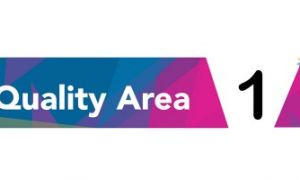Inviting families to give their input on the care and education of their children is not only an NQS requirement – Quality Area 6: Collaborative partnerships with families and communities – but makes sheer practical sense. The more they feel their opinions on service policies are genuinely sought, the greater will be their acceptance of policies and satisfaction with the service. The following article provides strategies on how services and educators can include family input to ensure better outcomes for children.
Reach Out
A good place to start is with a welcoming service environment so that families feel comfortable enough to open up to administrators and educators. Make them feel at ease by using first names for greeting, designing reception areas with lounge spaces or having translated signage/documents for families who are not fluent in English. Let it be known that their questions and interactions with staff are welcome as they come to drop off or pick up their children. Use such opportunities to ask families about their needs in relation to their children, their work and home life.
Use A Variety Of Approaches
Families vary widely in work and home dynamics and though they are all interested in their children’s well-being, they may not be able to show their interest in the same ways. Here educators need to be inventive and adaptive to get families to give their input. Apart from using daily interactions to get informal verbal feedback, explore formal methods like short written surveys, quick chats on phone, and online or telephonic surveys to record their inputs. You can even arrange to meet them for a more focused discussion or use feedback strategies like suggestion boxes, interactive noticeboards and displays.
Highlight Policies Under Review
It is a regulatory requirement to develop or update service policies in collaboration with families and these have to be documented as well. Use Parents/Guardian Handbook, Service Newsletters and Noticeboards to public policies to families so that they appreciate the importance of reviews and their own participation in the process. Eventually, mail them relevant parts of the policies or keep hard copies near sign-in areas or display them on the family noticeboard; send out notices seeking their inputs through emails fliers letters or SMS messages. The essential idea is to use a combination of strategies and a flexible approach so that families are supported to lend their input.
Be tactful - since families come into service from diverse social and cultural backgrounds, they can bring with them widely ranging values and beliefs about raising and educating children. Educators will not only have to be respectful of such diversity of views but be able to find a meeting ground with approved learning frameworks and service policies. Listen to all points of view and let families know their feedback is appreciated. Be ready with concrete examples of those inputs that have been incorporated into service. If there is a particular family practice or request that seems to run counter to service and curricula goals, then use tact and patience to discuss how they can and cannot be incorporated.
Further Reading
Engaging Families In Early Childhood Education - The following article provides information on engaging families in early childhood education.
Building Relationships with Families and Co-Workers - The following article provides strategies on how to build relationships with families.
Reference:
Policy Tip Sheet, ACECQA







 As an Educator in Australia, your pay rate falls under the Children’s Services Award 2010. This award states the minimum amount that an employer can
As an Educator in Australia, your pay rate falls under the Children’s Services Award 2010. This award states the minimum amount that an employer can When working as a qualified Early Childhood Teacher (with a university degree) within a service, your rate of pay will come from the Educational Services
When working as a qualified Early Childhood Teacher (with a university degree) within a service, your rate of pay will come from the Educational Services When working as a Diploma Qualified Educator your pay rate is from the Children's Services Award 2010. This Award states your minimum rate of pay
When working as a Diploma Qualified Educator your pay rate is from the Children's Services Award 2010. This Award states your minimum rate of pay When working as a Cert 3 Qualified Educator, your pay rate is from the Children's Services Award 2010. This Award states your minimum rate of
When working as a Cert 3 Qualified Educator, your pay rate is from the Children's Services Award 2010. This Award states your minimum rate of Educational Leaders play a crucial role in their early childhood service by ensuring that the educational program aligns with best practices and supports the holistic
Educational Leaders play a crucial role in their early childhood service by ensuring that the educational program aligns with best practices and supports the holistic In early childhood education and care, ratios are more than a technicality—they are a frontline safeguard. Every child deserves responsive supervision, emotional connection, and developmental
In early childhood education and care, ratios are more than a technicality—they are a frontline safeguard. Every child deserves responsive supervision, emotional connection, and developmental Here’s a comprehensive Mobile Phone and Smart Watch Policy tailored for early childhood education and care (ECEC) services in Australia, aligned with the latest 2025
Here’s a comprehensive Mobile Phone and Smart Watch Policy tailored for early childhood education and care (ECEC) services in Australia, aligned with the latest 2025 With the new national child safety reforms kicking in on 1 September 2025, early childhood services like yours have a real opportunity to lead the
With the new national child safety reforms kicking in on 1 September 2025, early childhood services like yours have a real opportunity to lead the The Sea of Fish Challenge is a national initiative that invites children, educators, families, and communities to create and display fish artworks as a symbol
The Sea of Fish Challenge is a national initiative that invites children, educators, families, and communities to create and display fish artworks as a symbol Across the early childhood education and care sector, educators are sounding the alarm: current staffing ratios are insufficient to deliver safe, meaningful, and developmentally appropriate
Across the early childhood education and care sector, educators are sounding the alarm: current staffing ratios are insufficient to deliver safe, meaningful, and developmentally appropriate


